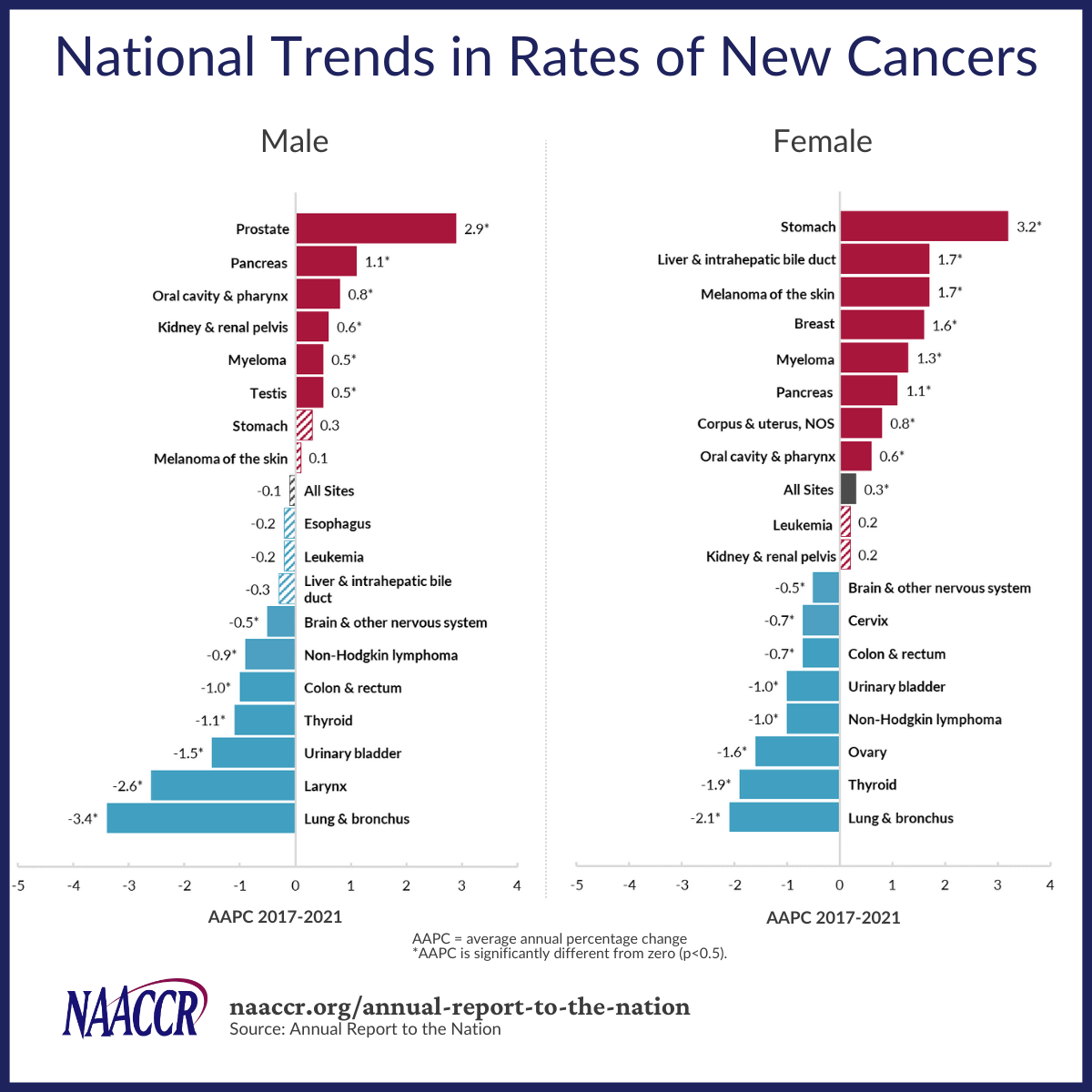Annual Report to the Nation
We are pleased to announce the released of the latest Annual Report to the Nation on the Status of Cancer. This report represents a collaborative effort from senior researchers at ACS, CDC, NAACCR, and NCI to produce current and comprehensive trends in cancer incidence and mortality. Our 25th Report was led by NAACCR and is currently available in the journal Cancer as open access.
The purpose of this report is to produce the most up-to-date and comprehensive trends in cancer incidence and mortality. Each year we also focus on a special topic. This year the special topic was the impact of the first two years of the COVID-19 pandemic on cancer rates.
The Annual Report to the Nation is a collaborative endeavor by leaders in the cancer surveillance field. Each year representatives from the American Cancer Society, Centers for Disease Control and Prevention, National Cancer Institute, National Center for Health Statistics, NAACCR, and invited scientists analyze the latest cancer rates from NAACCR and other sources to report on the most recent cancer trends in the US. A special focus on a cancer of interest is selected annually for in-depth analysis. These reports are published in scientific journals.
ANNUAL REPORT TO THE NATION ON THE STATUS OF CANCER, FEATURING STATE-LEVEL STATISTICS AFTER THE ONSET OF THE COVID-19 PANDEMIC:
This report shows that overall cancer incidence decreased from 2001 through 2013 and then stabilized among men through 2021. Among women, overall cancer incidence rates (on average) increased slightly every year from 2003 through 2021. Overall deaths from cancer also declined steadily in both men and women from 2001 through 2022, even during the first two years of the COVID-19 pandemic. The report appeared April 21, 2025, in Cancer.
The report also included an analysis of the COVID-19 pandemic’s impact on observed cancer incidence in individual states, the District of Columbia, and Puerto Rico for the first two years of the pandemic. Cancer incidence declined sharply in 2020, likely due to pandemic-related disruptions in health care, but returned to pre-pandemic levels by 2021. The magnitude of the 2020 decline was similar across states, despite variations in COVID-19 policy restrictions. These findings underscore the importance of providing access to health care, even during public health emergencies, to ensure the timely diagnosis of cancer.
Annual Report to the Nation on the Status of Cancer
HIGHLIGHTS:
-
Cancer incidence returned to expected levels in 2021. Early signs indicate that a historic pandemic with major healthcare delivery interruptions may not have the devastating impact on cancer diagnosis that was feared.
-
Cancer mortality has declined in both men and women for more than 20 years, even during the first 2 years of the COVID-19 pandemic.
-
Breast cancer mortality continues to decline, despite increases in incidence.
-
The continued reduction in tobacco use led to declines in incidence and death rates for several smoking-related cancers, including larynx, bladder, and lung. Lung cancer death rates have declined faster than incidence rates since the mid-2000s, coinciding with advancements in treatment, increased access to care through Medicaid expansion, and implementation of lung cancer screening.
-
Cancer incidence among children declined from 2015 to 2021 and mortality has steadily declined since at least 2001.
-
Cancer incidence and mortality among adolescents and young adults was stable during the pandemic (2020 to 2022).


